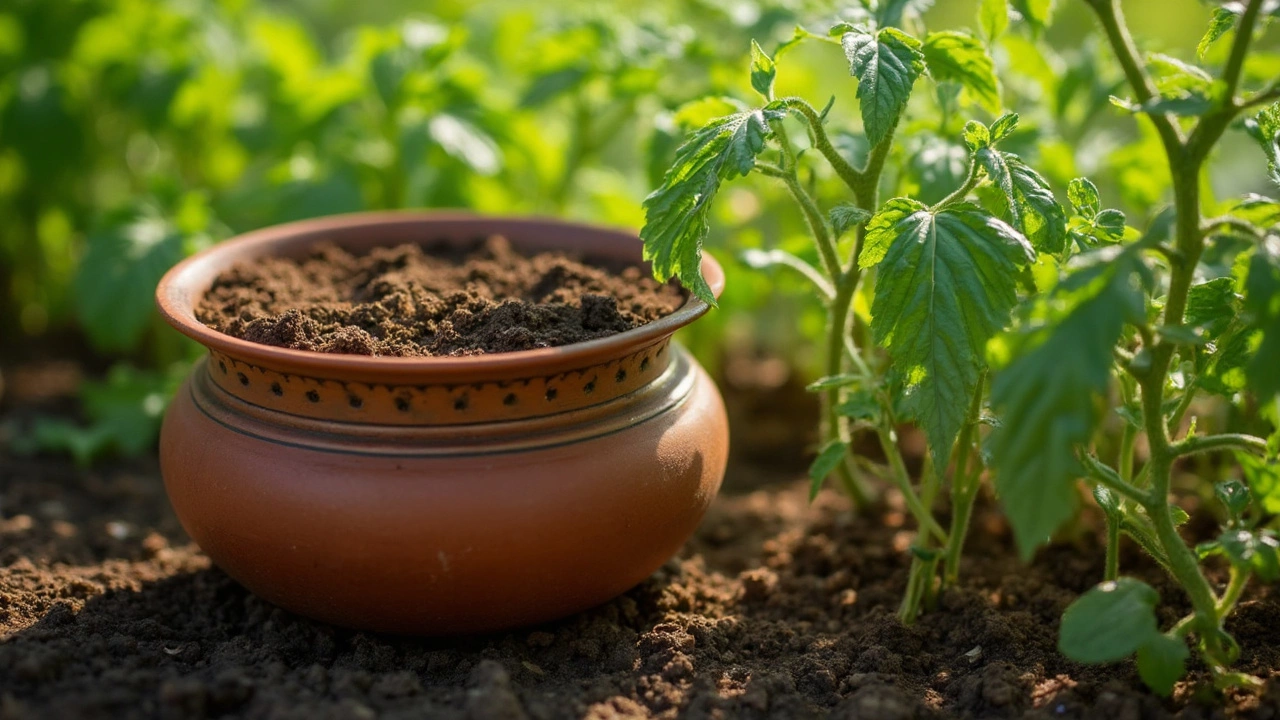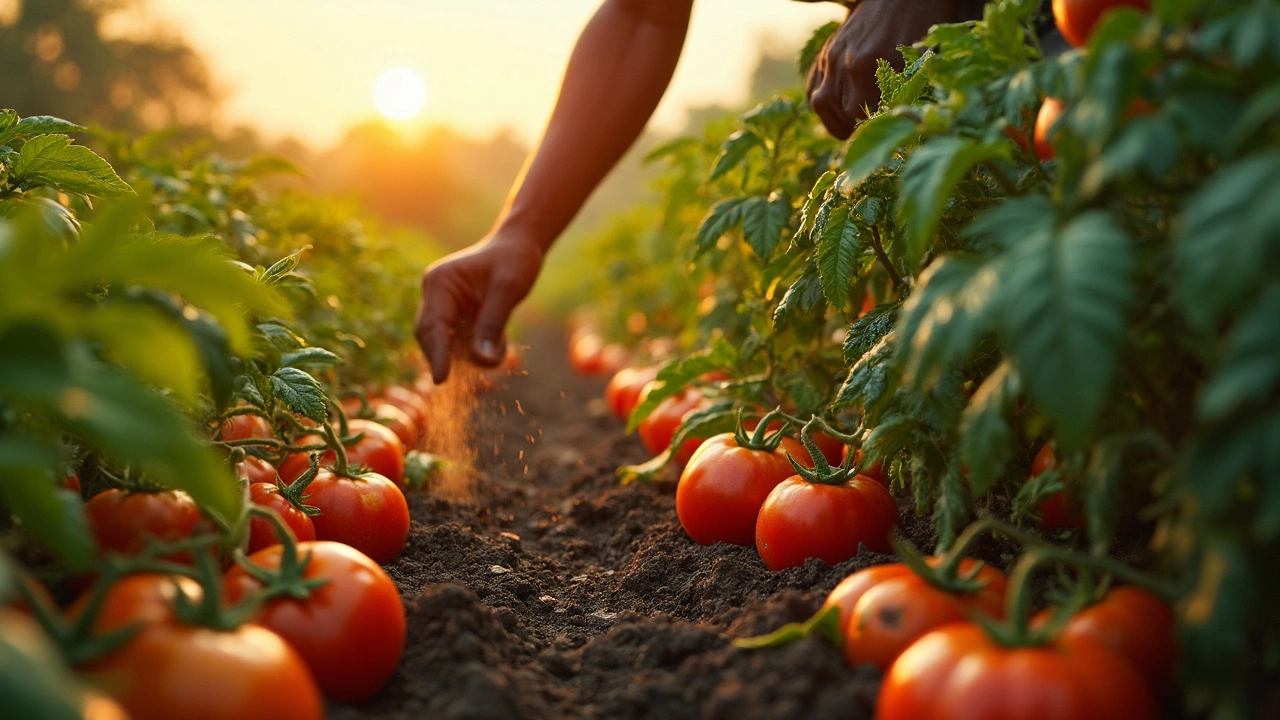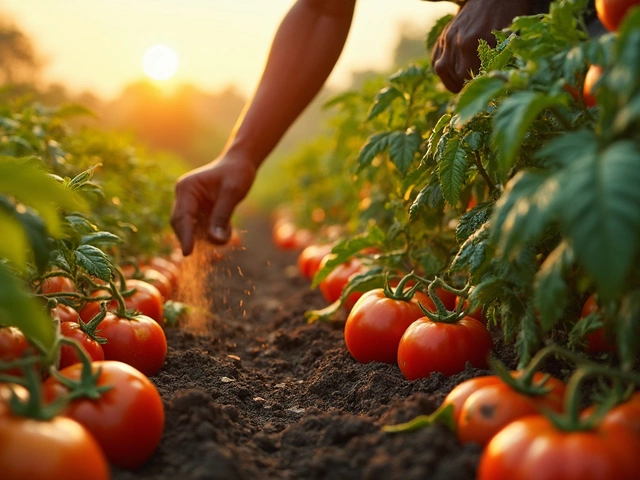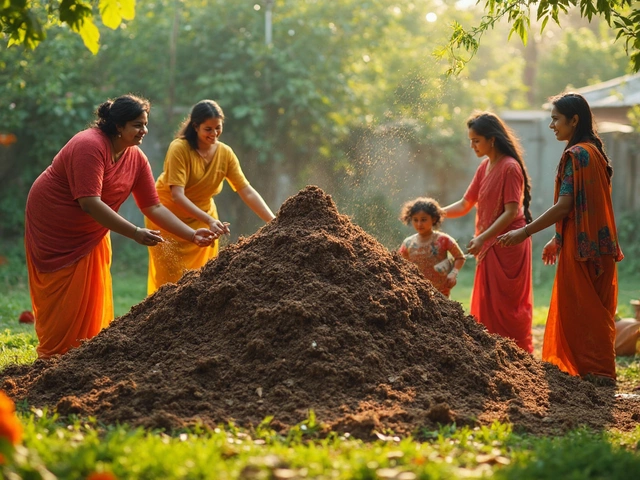Wondering how often to fertilize your prized tomato plants? It's a common question for gardeners eager to maximize their harvests. Tomato plants aren't just needy—they're strategic feeders, and getting the timing right is crucial. First off, it's essential to grasp that the frequency of fertilizing your tomatoes hinges on their growth stage and the existing nutrient levels in your soil.
Young tomato plants fresh in the ground benefit from a steady nutrient intake. You might want to start with a balanced fertilizer right after planting to help them get established. As the plants grow and begin to flower, a different blend might be needed. It's a bit like how kids need different care as they grow up, right?
- Understanding the Needs of Tomato Plants
- Choosing the Right Fertilizer
- Fertilizing Schedule for Optimal Growth
- Signs of Over-fertilization
- Tips for Sustainable Fertilizing
Understanding the Needs of Tomato Plants
Tomato plants are quite the finicky bunch, but once you know what makes them tick, you're already halfway to a bountiful harvest. They have specific nutrient needs that change as they grow, so feeding them the right way is key to healthy plants and juicy tomatoes.
Nitrogen, Phosphorus, and Potassium
The three main nutrients every tomato craves are nitrogen, phosphorus, and potassium (N-P-K). You've probably heard this before, but it's worth emphasizing because each plays a unique role. Nitrogen is all about lush leaves; it's the green machine for growth. Phosphorus is what you need for those strong roots and fruits. Finally, Potassium helps the plant overall, improving disease resistance and making the fruits tastier.
Soil and Plant Health
Your garden's soil is the foundation of all things green. Tomato plants need well-drained soil, rich in organic matter. Having the perfect soil pH is a big deal—it should be around 6.0 to 6.8. If your soil is off, the plants might not soak up the nutrients, no matter how much fertilizer you add.
Before planting, it's smart to test your soil to see what's missing. This way, you’re not just guessing and dumping random fertilizers.
Sun and Water
Tomatoes are sun-lovers too, needing about 6-8 hours of direct sunlight every day. Without enough sun, even the best fertilizer won’t save them. Watering is another balancing act. These plants like it regular but not soggy, which can drown their roots. Aim for consistent watering rather than soaking them infrequently.
| Growth Stage | Needs |
|---|---|
| Seedling | High nitrogen |
| Flowering | Higher phosphorus |
| Fruiting | Balanced N-P-K |
Get these basics right, and you’ll set yourself up for success, making it easier to figure out the best time to fertilize tomatoes through the season.
Choosing the Right Fertilizer
Picking the right fertilizer for your tomato plants can feel a bit like selecting the perfect ingredients for a well-loved recipe. It's all about balance and timing. When you're aiming for the juiciest tomatoes, understanding what goes into your garden soil can make all the difference.
Organic vs Inorganic Fertilizers
First up, you'll need to decide between organic and inorganic fertilizers. Organic options like compost or manure are great for improving the overall health of your soil over time. They break down slowly, feeding your plants at a steady pace. On the other hand, inorganic fertilizers can offer a quick nutrient boost. They're typically high in specific nutrients and readily available, but they shouldn’t be your only choice for fertilizing tomatoes.
Key Nutrients for Tomatoes
Tomatoes are a bit picky, needing plenty of nitrogen, phosphorus, and potassium—the big three in plant nutrition. If you're ever in doubt, a balanced fertilizer labeled with numbers like 10-10-10 should do the trick. Each number represents the percentage of nitrogen, phosphorus, and potassium respectively. But why these specific nutrients? Well, nitrogen helps with healthy leaves, phosphorus aids in strong roots and fruit, and potassium improves overall plant health.
Understanding Fertilizer Labels
When you're standing in the aisle eyeing those fertilizer bags, the labels can be your best friend. They not only provide the nutrient composition but also include instructions for application rates. Spend a minute reading them—it’ll help you get the most out of the fertilizer.
Common Fertilizer Types
- Granular Fertilizers: These are easy to spread but need watering in to dissolve and penetrate the soil.
- Liquid Fertilizers: Offer immediate absorption by plant roots and are excellent for a quick pick-me-up.
- Slow-Release Fertilizers: Ideal for gardeners who don't fancy constant refertilizing. Simply apply them once, and they gradually feed tomatoes over several weeks.
Choosing the right fertilizer isn’t rocket science, but a bit of know-how can sure make your tomato plants happy.

Fertilizing Schedule for Optimal Growth
Getting the fertilizing schedule right for your tomato plants can make all the difference in achieving those juicy, delicious tomatoes. As a rule of thumb, the process should begin even before planting. Use a starter fertilizer when preparing the garden soil to give your tomatoes a solid foundation.
Initial Fertilization: Pre-Planting
Start by mixing a balanced fertilizer into the soil a few days before planting. This early step sets the stage for healthy root development. Look for a 10-10-10 (nitrogen-phosphorus-potassium) mix to give young plants the right start.
Early Growth: After Planting
Once your tomatoes are in the ground and a couple of weeks have passed, it's time to revisit fertilizing. At this stage, a light fertilizer application helps promote growth. A side-dressing of fertilizer—sprinkling it in the soil beside your plant—helps get nutrients closer to the roots.
- Aim to fertilize one to two weeks after planting.
- Use a mix with a higher middle number, like 5-10-5, to support budding and blooming.
Flowering and Fruiting
When flowering starts, you need to change up the plan. Tomato plants are gearing up for fruit production and need an extra boost. Here, a higher potassium number is handy, such as a 5-10-10 formula.
| Growth Stage | Fertilizer Ratio | Frequency |
|---|---|---|
| Pre-Planting | 10-10-10 | One-time application |
| Early Growth | 5-10-5 | One to two weeks after planting |
| Flowering | 5-10-10 | Every three to four weeks |
Ongoing Maintenance
As your plants mature, continue fertilizing every three to four weeks, but stay alert. Over-fertilizing leads to lots of leaves but fewer tomatoes. Monitor plant growth and soil health to find your ideal rhythm.
If you're feeding your plants responsibly with attention to these stages, you'll likely see your tomatoes thrive. Remember, the goal is juicy, flavorful tomatoes, not just a lush-looking plant!
Signs of Over-fertilization
Thinking you’re giving your tomato plants some extra love with more fertilizer? Sometimes more isn't better. Over-fertilizing can actually backfire, leading to a range of problems for your tomatoes.
Common Symptoms
Look out for dark green leaves with rather lush growth, but here's the catch: they might be curling downwards or even have a burnt tips appearance. This is a classic sign of nitrogen overuse. You may also notice your plants have plenty of foliage but are stingy on the fruits. This leafy excess means your tomatoes are getting too much nitrogen and not enough of the nutrients they need for fruiting.
Soil and Root Damage
A less obvious, but even more sinister sign, is the buildup of salts in the soil. This can dehydrate your plants from the roots up, causing symptoms that look like drought stress despite regular watering. You might spot a white crust on the soil surface—a telltale sign of this issue.
"Over-fertilization can be as damaging to plants as under-fertilization," explains Dr. Alan Smith, a renowned soil scientist. "It's vital to strike a balance for healthy plant growth."
Other Indicators
If your tomato plants are wilting or their leaves are yellowing while you've been keeping your watering schedule on point, this could hint at high fertilizer levels causing root burn.
| Symptom | Possible Cause |
|---|---|
| Dark green, curling leaves | Excess Nitrogen |
| White crust on soil | Salt buildup |
| Wilted plants despite watering | Root burn from excess nutrients |
Monitoring these signs can help guide when to ease off the fertilizer for optimal tomato growth. Remember, it's about balance. If you think you've overdone the fertilizers, flushing the soil with water can help dilate some of the excesses. Keep an eye on your plants, and adjust as needed—they’ll thank you with lush fruits in return!

Tips for Sustainable Fertilizing
Keeping your tomato plants happy and healthy doesn't have to come at a cost to the environment. There are simple ways to ensure you're fertilizing your tomatoes responsibly and effectively.
1. Go Organic
Whenever possible, opt for organic fertilizers. They keep soil fertile over the long run and improve the soil's natural structure. Plus, organic fertilizers release nutrients slowly, which suits the steady demands of tomato plants.
2. Compost is Your Friend
There's nothing quite like compost to boost your soil quality. It's not only great for nutrients but also improves soil texture. If you have a compost bin at home, you're already on the right track. Spread some of it around the base of your tomato plants and let nature do its thing.
3. Test Your Soil
Before deciding how much and how often to fertilize, it's smart to get your soil tested. Knowing its exact nutritional content can help you choose the right garden soil improvement strategy. You might discover that you need less fertilizer than you thought, saving you money and reducing environmental impact.
4. Less is More
Over-fertilizing is a common mistake, which leads to nutrient runoff and can harm nearby waterways. Aim to use less product but more frequently if needed, especially during key growth phases of your tomato plants. This reduces waste and maximizes benefit.
5. Mulch for Moisture
Use mulch to help retain soil moisture and temperature. It prevents the top layer from drying out and minimizes the need for frequent watering and fertilizes the soil as it breaks down.
Following these practices ensures you get juicy tomatoes and healthy tomato growth while doing your bit for the planet. By making minor adjustments to how you care for your garden, you're setting yourself up for a bountiful harvest season after season.




